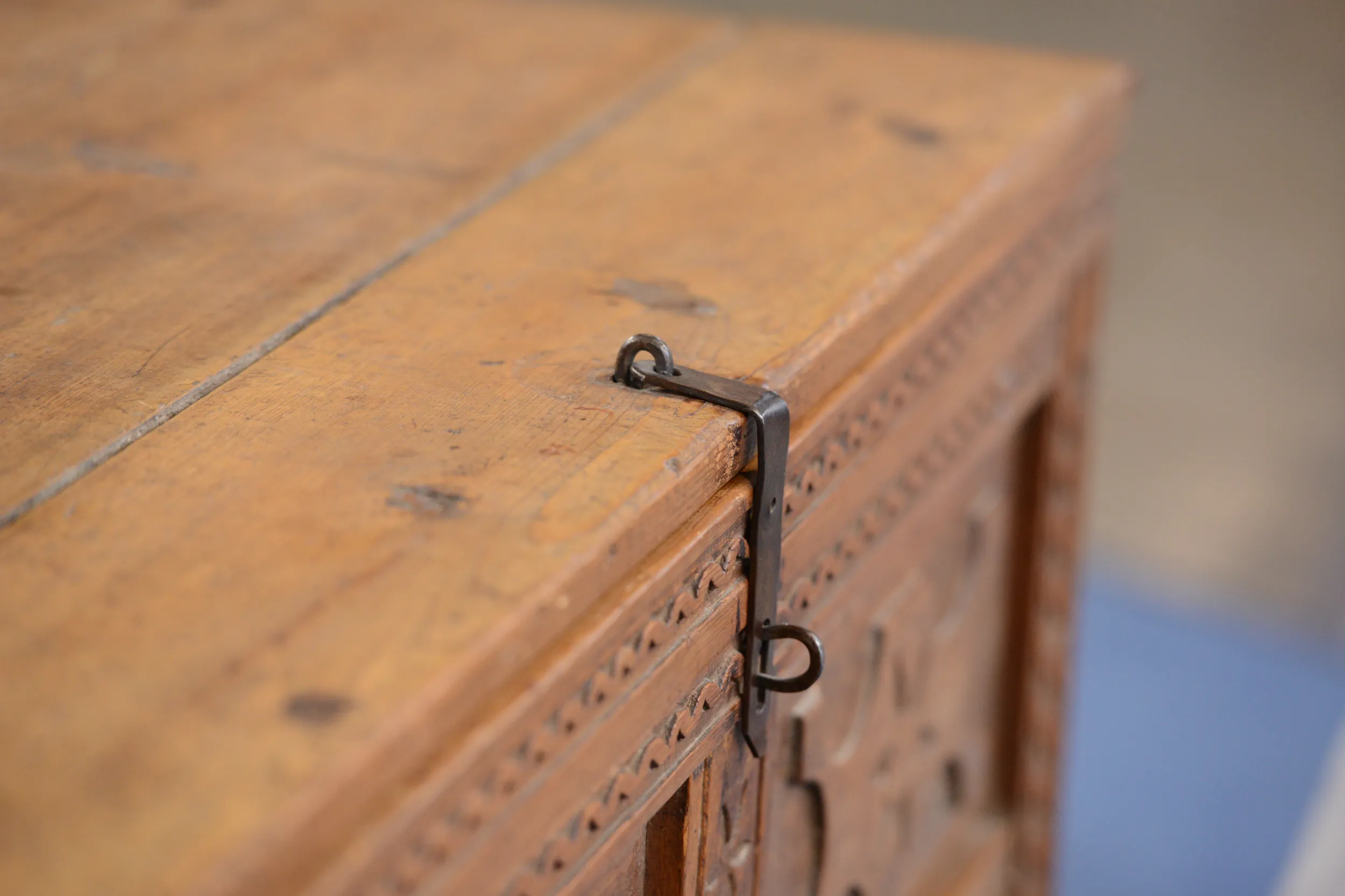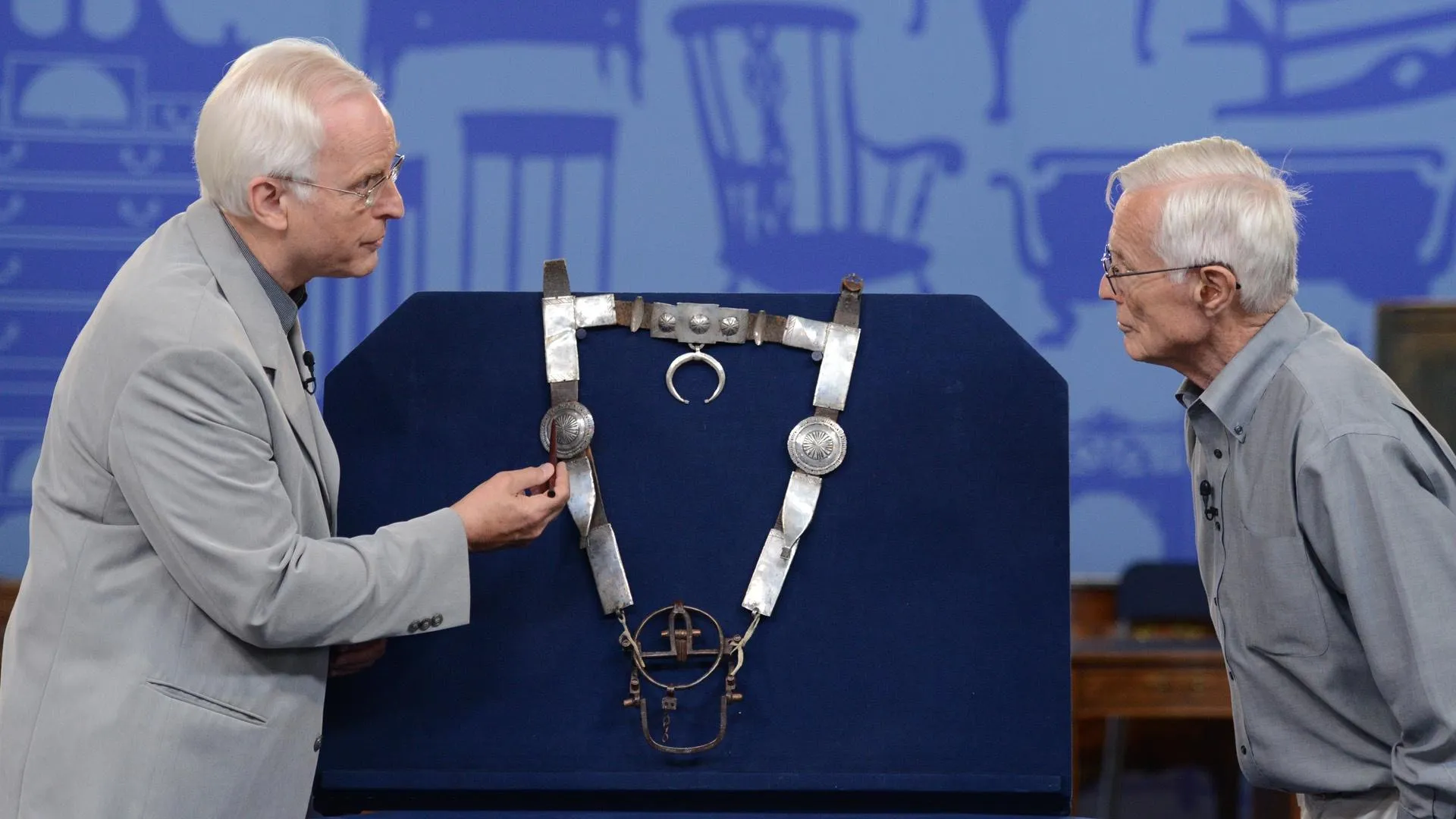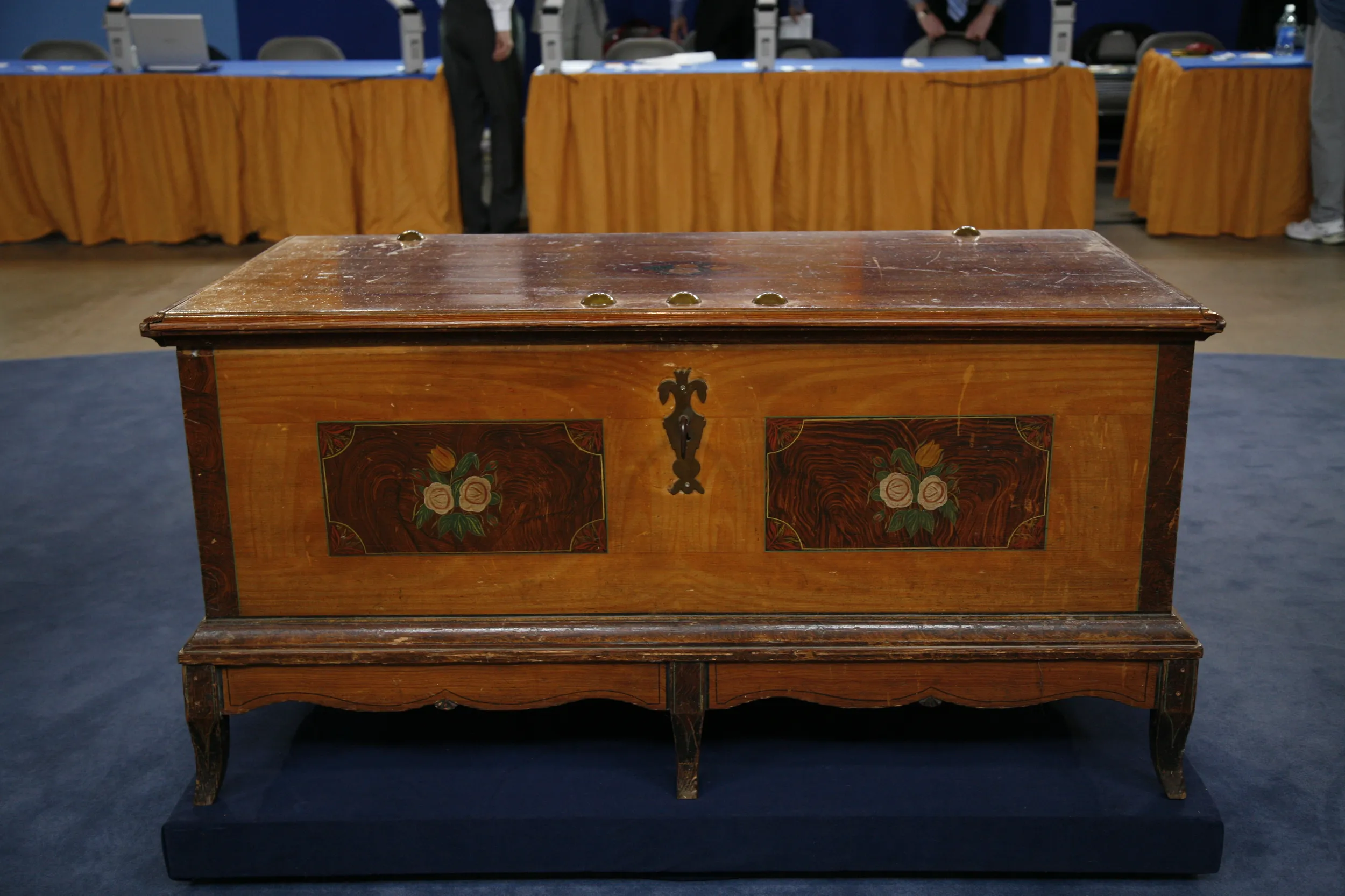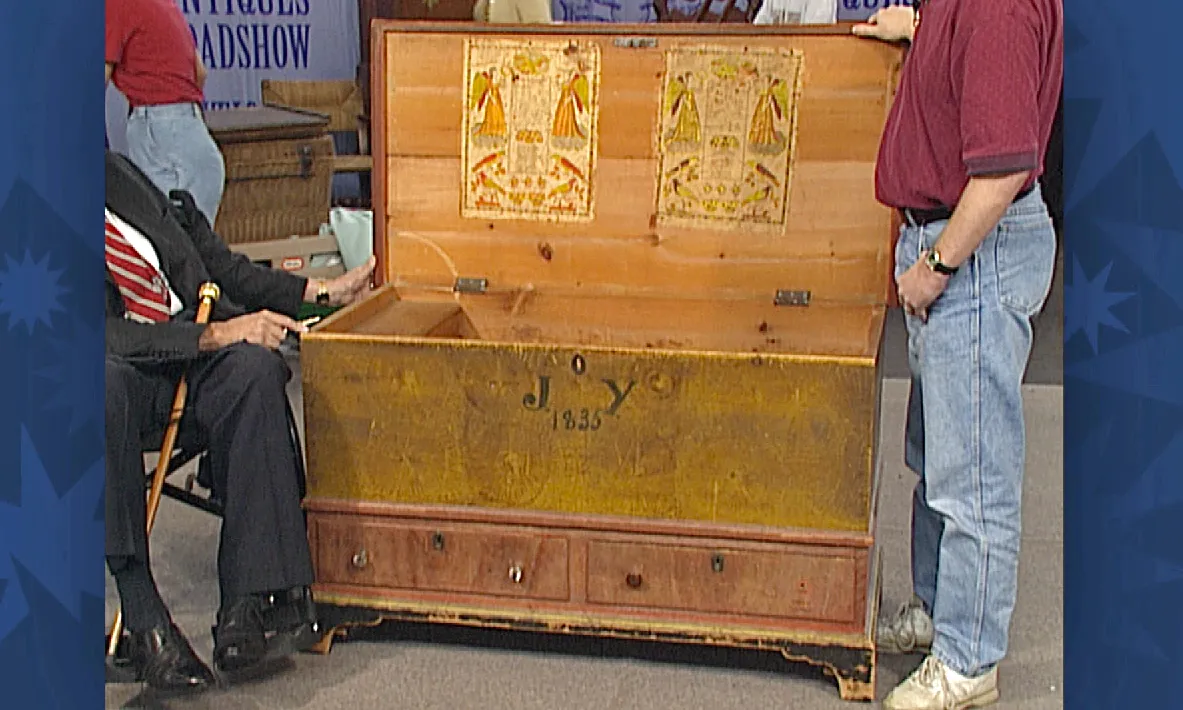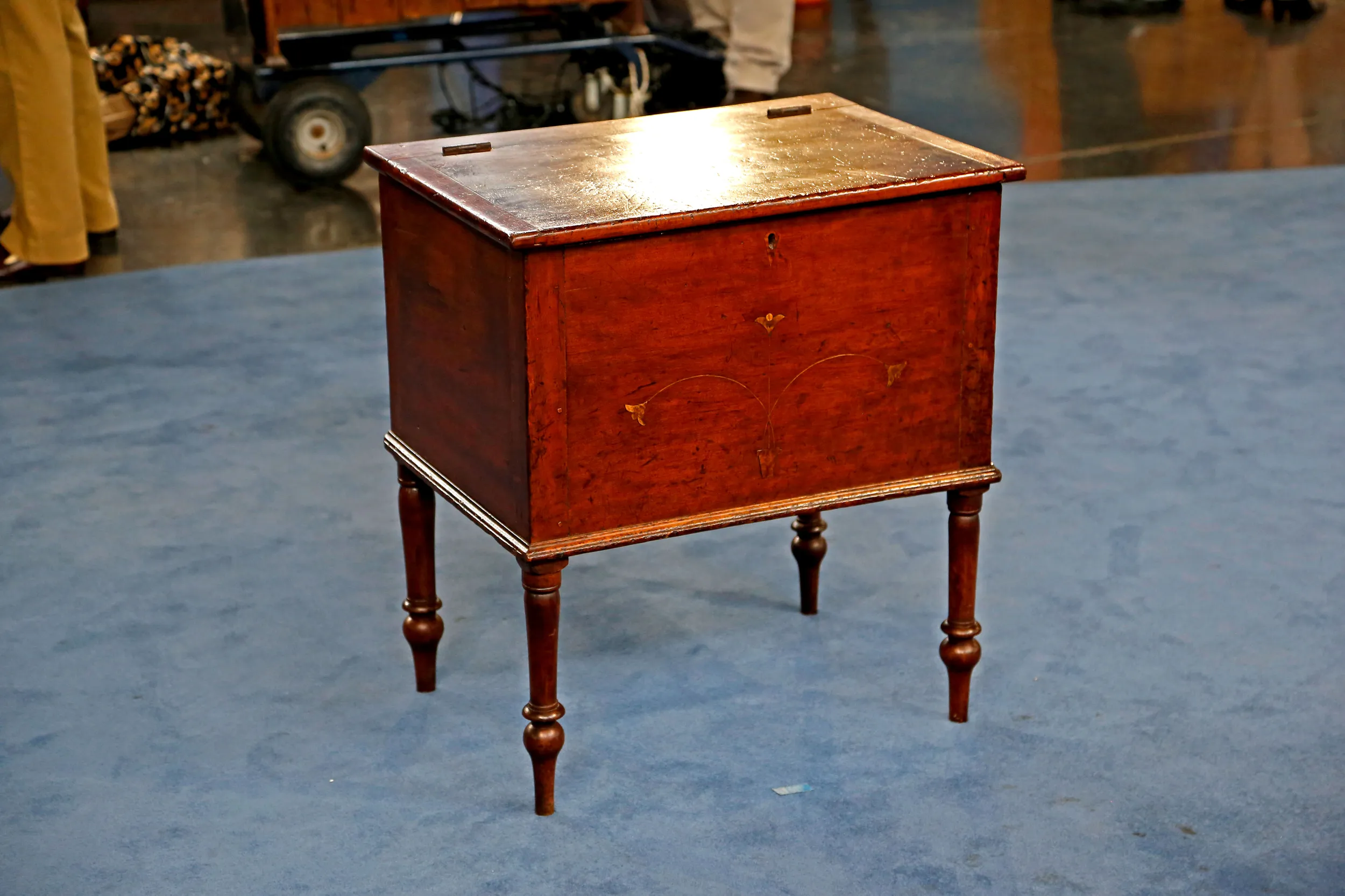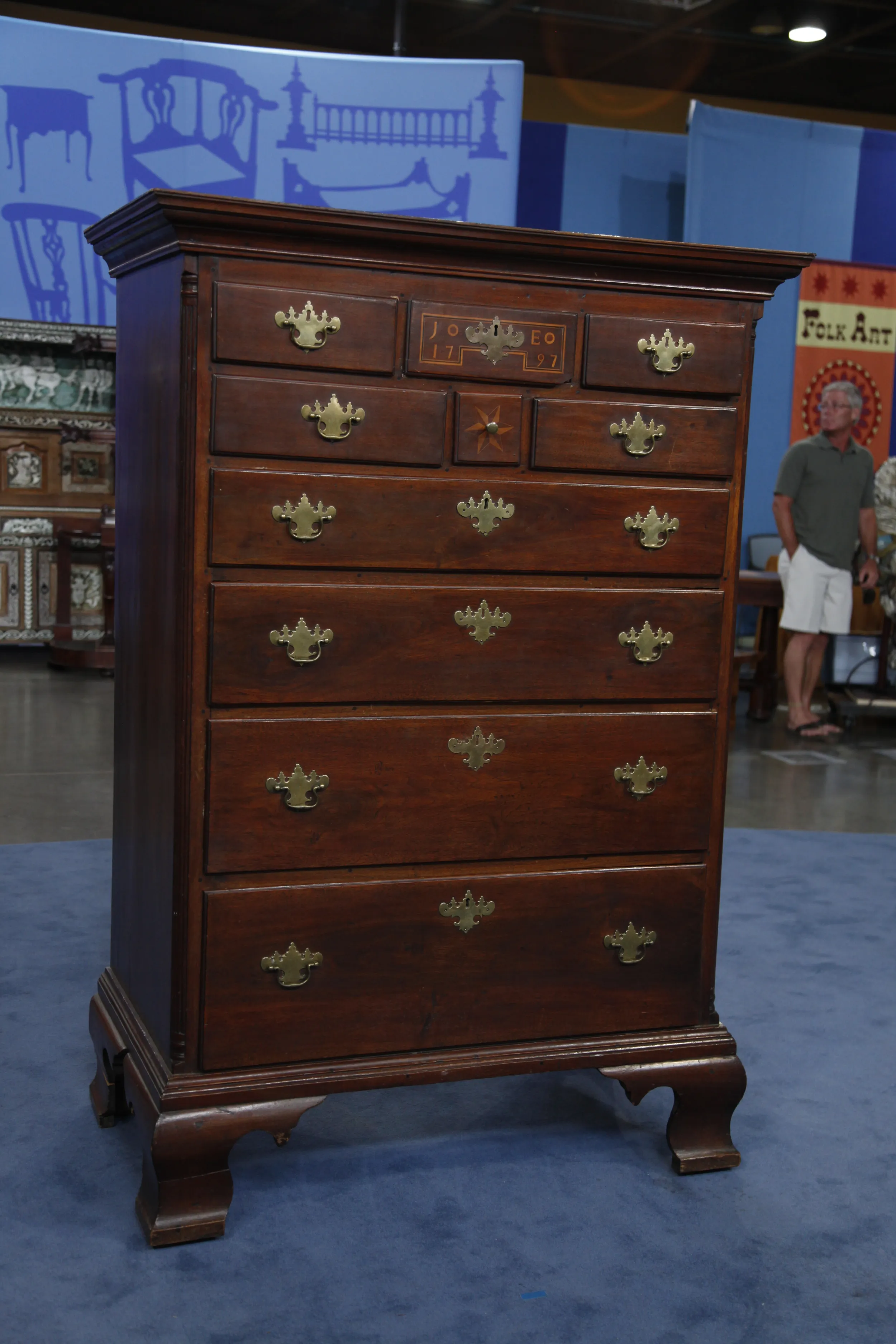GUEST: I think it's a blanket chest. My grandparents and then my dad always kept Native American rugs and things like that in it. So I'm not sure where it came from.
APPRAISER: You're not so sure?
GUEST: No, it just looks sort of New Mexican. You can tell it's been used a lot.
APPRAISER: Yeah, it has been used a lot. It's very cool because it's actually locally made, as you might have surmised.
GUEST: Yea I think—
APPRAISER: And what's cool about it is that it tells a great story. It's got Spanish colonial influences and what's now the American Southwest was Spain's northern frontier: California, Texas, New Mexico, Arizona. And people who were actually making this stuff, the cabinetmakers-- or carpinteros as they were known-- were using local wood-- ponderosa pine-- to make the furniture because the hardwoods didn't grow here that grew back East. So they used what was locally available to them, and they also decorated it with iconography that symbolized some local characteristics. It might be the physical geography of the buttes and the mesas, or the corn and clouds and rivers. That's why you have this wonderful incising and shallow carving on the raised panels. This piece strikes me as being early 19th century from the construction. But what's also interesting is that it was hard to get iron in the Southwest. So instead of using nails, which would have been prohibitively expensive, they put it together with mortise-and-tenon construction, which is essentially...
GUEST: Fitted together.
APPRAISER: It's a male-female joint where the rails and the stiles come together. And then they would use pins, whittled pins or pegs to hold the joints together. What's also fascinating is that a very sparse amount of iron is used on this. You see it for the hasp here to lock and close the chest and for the hinges or snipe hinges in the back, which is essentially two cotter pins that a blacksmith would have made that are looped together and then nailed back into the case to hold it in place. It's a great rarity. They don't turn up much in the Southwest and they certainly don't turn up much in the Northeast anymore. And if this were to come to auction today I think I would place an estimate on it of $3,000 to $5,000.
GUEST: That's nice.

